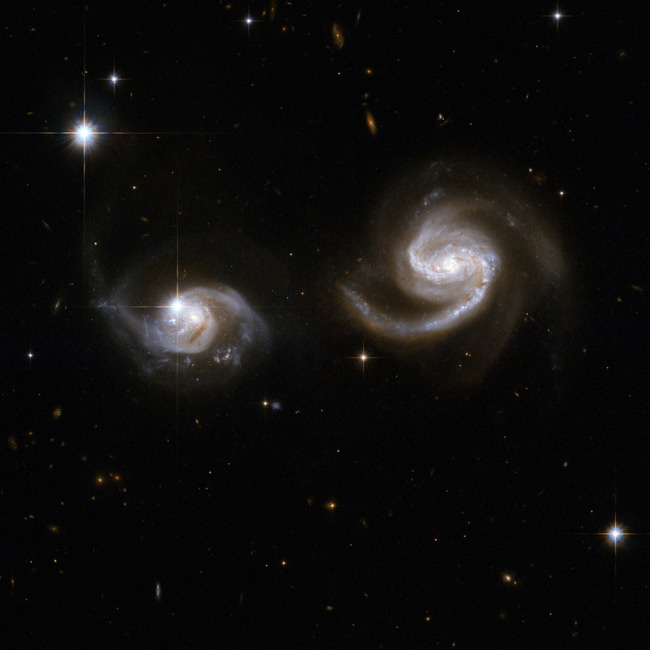Einstein's 'Biggest Blunder' Turns Out to Be Right

What Einstein called his worst mistake, scientists are now depending on to help explain the universe.
In 1917, Albert Einstein inserted a term called the cosmological constant into his theory of general relativity to force the equations to predict a stationary universe in keeping with physicists' thinking at the time. When it became clear that the universe wasn't actually static, but was expanding instead, Einstein abandoned the constant, calling it the '"biggest blunder" of his life.
But lately scientists have revived Einstein's cosmological constant (denoted by the Greek capital letter lambda) to explain a mysterious force called dark energy that seems to be counteracting gravity -- causing the universe to expand at an accelerating pace.
A new study confirms that the cosmological constant is the best fit for dark energy, and offers the most precise and accurate estimate yet of its value, researchers said. The finding comes from a measurement of the universe's geometry that suggests our universe is flat, rather than spherical or curved.
Geometry of the universe
Physicists Christian Marinoni and Adeline Buzzi of the Universite de Provence in France found a new way to test the dark energy model that is completely independent of previous studies. Their method relies on distant observations of pairs of galaxies to measure the curvature of space.
"The most exciting aspect of the work is that there is no external data that we plug in," Marinoni told SPACE.com, meaning that their findings aren't dependent on other calculations that could be flawed.
Get the Space.com Newsletter
Breaking space news, the latest updates on rocket launches, skywatching events and more!
The researchers probed dark energy by studying the geometry of the universe. The shape of space depends on what's in it ?that was one of the revelations of Einstein's general relativity, which showed tha tmass and energy (two sides of the same coin) bend space-time with their gravitational force.
Marinoni and Buzzi set out to calculate the contents of the universe -- i.e. how much mass and energy, including dark energy, it holds -- by measuring its shape.
There were three main options for the outcome.
Physics says the universe can either be flat like a plane,spherical like a globe, or hyperbolically curved like a saddle .Previous studies have favored the flat universe model, and this new calculation agreed.
Flat universe
The geometry of space-time can distort structures within it.The researchers studied observations of pairs of distant galaxies orbiting each other for evidence of this distortion, and used the magnitude of the distortion as a way to trace the shape of space-time.
To discover how much the galaxy pairs' shapes were being distorted, the researchers measured how much each galaxy's light was red-shifted ? that is, budged toward the red end of the visual spectrum by a process called the Doppler shift, which affects moving light or sound waves.
The redshift measurements offered away to plot the orientation and position of the orbiting pairs of galaxies. The resul tof these calculations pointed toward a flat universe.
Marinoni and Buzzi detail their findings in the Nov. 25 issue of the journal Nature.
Understanding dark energy
By providing more evidence that the universe is flat, the findings bolster the cosmological constant model for dark energy over competing theories such as the idea that the general relativity equations for gravity are flawed.
"We have at this moment the most precise measurement sof lambda that a single technique can give," Marinoni said. "Our data points towards a cosmological constant because the value of lambda we measure is close to minus one, which is the value predicted if dark energy is the cosmological constant."
Unfortunately, knowing that the cosmological constant is the best mathematical explanation for how dark energy is stretching out our universe doesn't help much in understanding why it exists at all.
"Many cosmologists regard determining the nature of dark energy and dark matter as the most important scientific question of the decade," wrote Alan Heavens of Scotland's University of Edinburgh in an accompanying essay in the same issue of Nature. "Our picture of the universe involves putting together a number of pieces of evidence, so it is appealing to hear of Marinoni and Buzzi's novel technique for testing the cosmological model, not least because it provides a very direct and simple measurement of the geometry of the universe."
- WhatIs Dark Energy?
- Top5 Cosmic Myths
- Top10 Strange Things in Space
You can follow SPACE.comsenior writer Clara Moskowitz onTwitter @ClaraMoskowitz.
Join our Space Forums to keep talking space on the latest missions, night sky and more! And if you have a news tip, correction or comment, let us know at: community@space.com.

Clara Moskowitz is a science and space writer who joined the Space.com team in 2008 and served as Assistant Managing Editor from 2011 to 2013. Clara has a bachelor's degree in astronomy and physics from Wesleyan University, and a graduate certificate in science writing from the University of California, Santa Cruz. She covers everything from astronomy to human spaceflight and once aced a NASTAR suborbital spaceflight training program for space missions. Clara is currently Associate Editor of Scientific American. To see her latest project is, follow Clara on Twitter.









